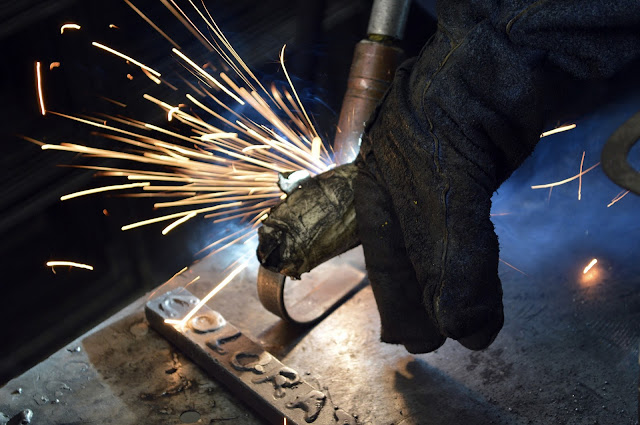▶ HAND SAFETY 101 ◀
Jobs that require the use of PPE(personal protective equipment), such as a welder, construction worker, and chemist in laboratories, need to pay extra attention in the safety department especially regarding their hands.
These professions use dangerous machinery on a regular basis, such as chain saws and table saws, toxic chemicals that can potentially burn the skin, and welding equipment where you're exposed to extreme heat with even the risk of clothing catching on fire.
Statistics show that 70% of hand injuries result from not wearing any form of hand protection. 30% is caused by wearing the wrong type of glove. This shows that people do not take PPE seriously enough and refrain from wearing any type of hand protection whilst on the job, assuming that there won't be any accidents.
If we take a look at the hand safety statistics, there are many surprising facts.
According to the U.S. Bureau of Labor Statistics Reports:
▶There are over 1 million hand injuries in the U.S. alone
▶20% of disabling workplace injuries involve hands
▶ There are over $740,000,000 in hand and wrist injuries
Statistics prove how important it is to educate our workers on personal protective equipment to improve their awareness of self-protection on site. This not only allows employees to work safely (which is the most important factor), it also saves a great deal of injury costs. Not only do these hand and finger injuries impact your profession, they affect personal lives as well. These injuries not only affect the physical health, they also affect the mental health.
To prevent hand injuries, appropriate gloves for each type of job should fit well on your hands. For example, if you're doing work that requires precision, you should wear a pair of gloves that allow your hands to move freely with high dexterity. However, if the main purpose is to protect your hands from flame or heat, gloves that are thick enough to block heat with flame retardancy is something that should be taken into aspect above dexterity.
Chemists working with toxic chemicals should make sure the gloves are chemical resistant and have been tested to ensure that they do. Welders should wear appropriate welding gloves suitable for the type of welding they're doing and other protective gear should be worn as well for they're exposed to sparks. Electricians or any type of workers who are exposed to electrical hazards should make sure the gloves and sleeves they're wearing are insulated.
Personal protective equipment should not be taken lightly and need to educate employees regarding how they can protect themselves on site. Employers need to provide employees with regular safety meetings. By doing so, not only we can reduce the number of injuries that occur each year, we can also make workers more aware of the proper ways to keep themselves safe at work.
For more Kamelo Safety PPE, visit our website by clicking the picture below ▼






Comments
Post a Comment